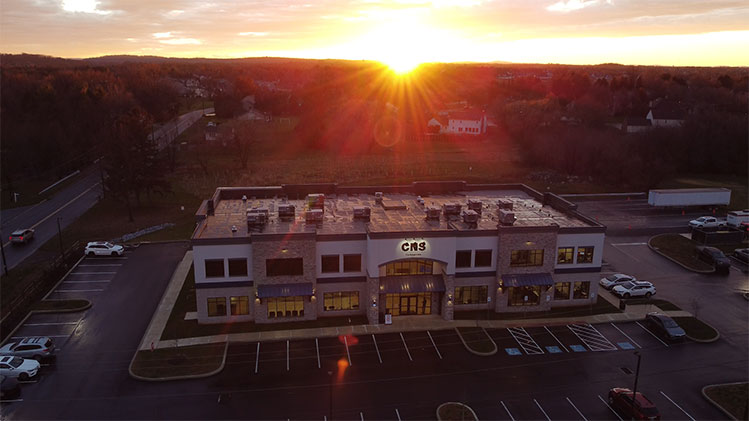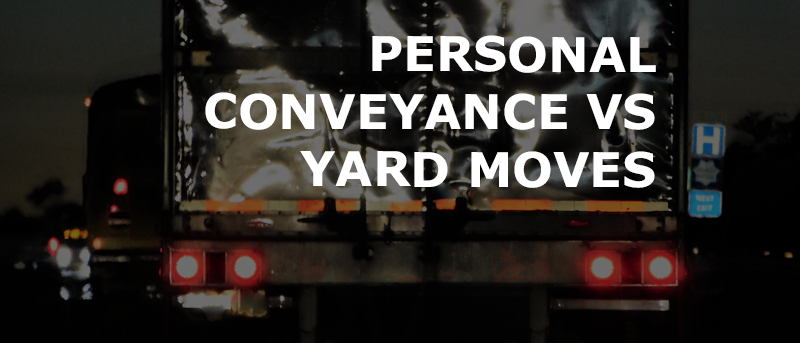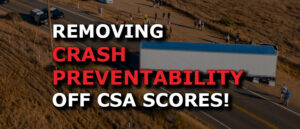Furry Friends Cause Trucking Border Delays At Canadian Border
To prevent reintroduction of rabies carried by dogs into the United States, new CDC regulations require proof of healthy pets at border crossing. Truckers who
We are a team of DOT Compliance and Licensing Professionals helping trucking and transportation companies remain safe, compliant, and profitable.
CNS or Compliance Navigation Specialists is DOT Compliance company that assists trucking and transportation companies remain DOT Compliant. We are part of a network of companies, CNS Companies, specializing in services related to the transportation, manufacturing, construction, service, education and medical industries.

A full-scale DOT Compliance Program managing a long haul carrier’s safety, compliance, licensing and more.
Learn more >>>
A DOT Compliance Program that keeps motor carriers compliant with the 6 Basic DOT Regulations required of all carriers.
Learn more >>>
Our Short-Haul/Construction Program is a full-scale program designed for private carriers that do not haul for-hire.
Learn more >>>
Our most comprehensive DOT Compliance Program, operating as your company’s off-site Safety Director or assisting your current safety personnel.
Learn more >>>
Our Non-CDL Program is a full-scale program managing safety, compliance, licensing and more for moving companies, couriers, landscapers, or any company subject to DOT regulations and does not employ CDL drivers.
Learn more >>>
Our DOT Audit Services cover a number of different types of DOT Audits that new and existing carriers will be subject to.
Our DOT Driver Services help trucking companies and carriers to stay compliant as they grow and hire more drivers.
Our DOT Vehicle Services focus on ensuring your vehicles are compliant with DOT Regulations, which is just as important as your drivers.
Our DOT Services for Special Carriers focus on companies outside of the typical motor carrier, like HAZMAT, Passenger and Bus Carriers.
CNS is part of a group of companies that offer other necessary services for the trucking and transportation industry, such as Commercial Trucking Insurance, CDL Training, Online Training Course, and even Healthcare.
Our DOT Licensing Services will cover you whether you are an existing company or just starting a trucking company. Our DOT Licensing Specialists can help you get up and running and in days with your DOT number, MC Authority, EIN, UCR, IFTA, 2290 HVUT, Fuel Taxes and can even set you up to get your Commercial Driver's License (CDL) with CNS Driver Training Center.
Our DOT Licensing Specialists will help you with every aspect of starting a trucking company. All you need to do is choose a name for your trucking company.
You will need to ensure your DOT Number, MC Authority, Vehicle Registration, etc. is all set up properly when you start your trucking business.
Our Licensing Specialists can help with all aspects of filing and renewing licenses, fuel taxes, etc.
CNS is part of a group of companies that offer other necessary services for the trucking and transportation industry, such as Commercial Trucking Insurance, CDL Training, Online Training Course, and even Healthcare.
To prevent reintroduction of rabies carried by dogs into the United States, new CDC regulations require proof of healthy pets at border crossing. Truckers who
CNS or Compliance Navigation Specialists is DOT Compliance company that assists trucking and transportation companies remain DOT Compliant. We are part of a network of companies, CNS Companies, specializing in services related to the transportation, manufacturing, construction, service, education and medical industries.
CNS Companies is a network of companies specializing in services related to the transportation, manufacturing, construction, service, education and medical industries. Our DOT Compliance division is handled by Compliance Navigation Specialists, CNS Insurance handles Commercial Truck Insurance, CDL training is managed by the CNS Driver Training Center and healthcare is managed by CNS Occupational Medicine.
We are a team of DOT Compliance and Licensing Professionals helping trucking and transportation companies remain safe, compliant, and profitable.
CNS or Compliance Navigation Specialists is DOT Compliance company that assists trucking and transportation companies remain DOT Compliant. We are part of a network of companies, CNS Companies, specializing in services related to the transportation, manufacturing, construction, service, education and medical industries.

A full-scale DOT Compliance Program managing a long haul carrier’s safety, compliance, licensing and more.
Learn more >>>
A DOT Compliance Program that keeps motor carriers compliant with the 6 Basic DOT Regulations required of all carriers.
Learn more >>>
Our Short-Haul/Construction Program is a full-scale program designed for private carriers that do not haul for-hire.
Learn more >>>
Our most comprehensive DOT Compliance Program, operating as your company’s off-site Safety Director or assisting your current safety personnel.
Learn more >>>
Our Non-CDL Program is a full-scale program managing safety, compliance, licensing and more for moving companies, couriers, landscapers, or any company subject to DOT regulations and does not employ CDL drivers.
Learn more >>>
Our DOT Audit Services cover a number of different types of DOT Audits that new and existing carriers will be subject to.
Our DOT Driver Services help trucking companies and carriers to stay compliant as they grow and hire more drivers.
Our DOT Vehicle Services focus on ensuring your vehicles are compliant with DOT Regulations, which is just as important as your drivers.
Our DOT Services for Special Carriers focus on companies outside of the typical motor carrier, like HAZMAT, Passenger and Bus Carriers.
CNS is part of a group of companies that offer other necessary services for the trucking and transportation industry, such as Commercial Trucking Insurance, CDL Training, Online Training Course, and even Healthcare.
Our DOT Licensing Services will cover you whether you are an existing company or just starting a trucking company. Our DOT Licensing Specialists can help you get up and running and in days with your DOT number, MC Authority, EIN, UCR, IFTA, 2290 HVUT, Fuel Taxes and can even set you up to get your Commercial Driver's License (CDL) with CNS Driver Training Center.
Our DOT Licensing Specialists will help you with every aspect of starting a trucking company. All you need to do is choose a name for your trucking company.
You will need to ensure your DOT Number, MC Authority, Vehicle Registration, etc. is all set up properly when you start your trucking business.
Our Licensing Specialists can help with all aspects of filing and renewing licenses, fuel taxes, etc.
CNS is part of a group of companies that offer other necessary services for the trucking and transportation industry, such as Commercial Trucking Insurance, CDL Training, Online Training Course, and even Healthcare.
To prevent reintroduction of rabies carried by dogs into the United States, new CDC regulations require proof of healthy pets at border crossing. Truckers who
CNS or Compliance Navigation Specialists is DOT Compliance company that assists trucking and transportation companies remain DOT Compliant. We are part of a network of companies, CNS Companies, specializing in services related to the transportation, manufacturing, construction, service, education and medical industries.
CNS Companies is a network of companies specializing in services related to the transportation, manufacturing, construction, service, education and medical industries. Our DOT Compliance division is handled by Compliance Navigation Specialists, CNS Insurance handles Commercial Truck Insurance, CDL training is managed by the CNS Driver Training Center and healthcare is managed by CNS Occupational Medicine.

Motor carriers are responsible for ensuring that drivers are not operating while ill or fatigued. However, motor carriers, at their discretion, may authorize their drivers to use a CMV while off-duty for personal conveyance.
In the trucking industry, Personal Conveyance refers to the movement of a commercial motor vehicle (CMV) for personal use while the driver is off duty, and not furthering the load closer to the final destination.
The CMV may be used for personal conveyance even if it is laden, as long as the load is not being transported for the commercial benefit of the motor carrier at that time.
Personal conveyance rules are covered in the ELD mandate, and some of those rules have been updated to give drivers a little more flexibility when it comes to off-duty time.
It is important to remember that personal conveyance is not mandatory; it is optional. Carriers can configure their ELDs to allow drivers to log personal conveyance, but they are not required to do so.
Some examples of what the FMCSA does consider acceptable uses for Personal Conveyance include:
[Related: Driver Training Prevents the Biggest Unplanned Costs Affecting Fleets]
However, drivers should be aware of some personal conveyance limitations.
Some examples of what the FMCSA does not qualify as Personal Conveyance include:
Calling one of the above scenarios personal conveyance could result in citations and/or fines.
When in personal conveyance mode, the ELD does not apply the time spent driving as a part of your 11-hour driving time, however, the ELD does still record and report the time, which will show up on an audit report.
Drivers pushing the edge of their drive time window will be tempted to use personal conveyance as a method to stay within their allotted hours and finish their day, but if audited it will only take the DOT Officer a few questions to determine if the recorded Personal Conveyance was legitimate.
Therefore, it is very important for drivers to annotate their logs, specifying why personal conveyance was used.
As with personal conveyance, ELD functionality will include the ability to record yard moves, if the company chooses to do so. Operating the vehicle as a yard move will not record the time against the driver’s drive-time window.
But it does count towards a driver’s “on duty, not driving” time.
In other words, if a driver starts their day performing yard moves, then they have started their 14-hour on-duty clock.
A yard move is the operation of a commercial vehicle within:
It is important to note that when driving as a yard move at a customer facility, it must be a closed facility with restricted public access.
For example, moving a trailer or bobtailing at a shopping mall or other road or parking lot open to the public does not qualify as a yard move. It must be logged as driving time.
If other team members, such as mechanics, move the vehicle around the yard, they too should record the drive time in the ELD.
If they don’t login to the ELD, there will be an unassigned log. Be sure to assign the yard move to the mechanic or team member and annotate with any information.
Again, yard time shows up on an audit report and it will only take the officer a few questions to determine if the recorded Yard Move was legitimate or not. So, be sure to annotate your logs, specifying why the yard move was used.
While a single minor DOT violation is unlikely to lead to long-term damage for your company, repeat violations will.
In other words, a history of repeat violations can cause shippers to become concerned for the safety of their cargo. But this is just one example.
Repeat violations can crush your fleet’s reputation by:
Trucking companies that are considered “high risk” have bad SAFER scores, high losses, accidents, driver issues, and conditional ratings.
Culture is key to implement the changes necessary to pull yourself out of this category, but it can take time to see the changes reflect in your SAFER scores and over-the-road performance.
If you are worried about being considered “high risk”, reach out to CNS Insurance to shop for a high-risk policy and assistance with risk mitigation.
Drivers need to properly manage their driver logs, ELDs, and pre and post-trip inspections. Carriers should implement quality:
All of this will help prevent being a target for the DOT at roadside inspections and is a valuable resource to ensure a healthy fleet, and compliant safety practices.
Our DOT trainers offer a variety of in-person or online training courses tailored to the specific needs or weaknesses of your company.

To prevent reintroduction of rabies carried by dogs into the United States, new CDC regulations require proof of healthy pets at border crossing. Truckers who

This means future regulations will “become clearer” or “stuck in the courts” for years. On June 28, 2024, the U.S. Supreme Court overturned the Chevron

ATRI’s Research Advisory Committee (RAC) selected a diverse set of research priorities designed to address some of the industry’s most critical issues including workforce development,

CNS can help with our Roadside & Incident Report Management service where a team of DOT Compliance Specialists will assess the Department of Transportation safety records
Our DOT Compliance Programs ensure it is your top priority and keeps your business running.
Receive the latest transportation and trucking industry information about FMCSA and DOT Audits, Regulations, etc.

To prevent reintroduction of rabies carried by dogs into the United States, new CDC regulations require proof of healthy pets at border crossing. Truckers who

This means future regulations will “become clearer” or “stuck in the courts” for years. On June 28, 2024, the U.S. Supreme Court overturned the Chevron

ATRI’s Research Advisory Committee (RAC) selected a diverse set of research priorities designed to address some of the industry’s most critical issues including workforce development,
Join our monthly newsletter and stay up-to-date on trucking industry news and receive important compliance and licensing tips.
Join our monthly newsletter and stay up-to-date on trucking industry news and receive important compliance and licensing tips.